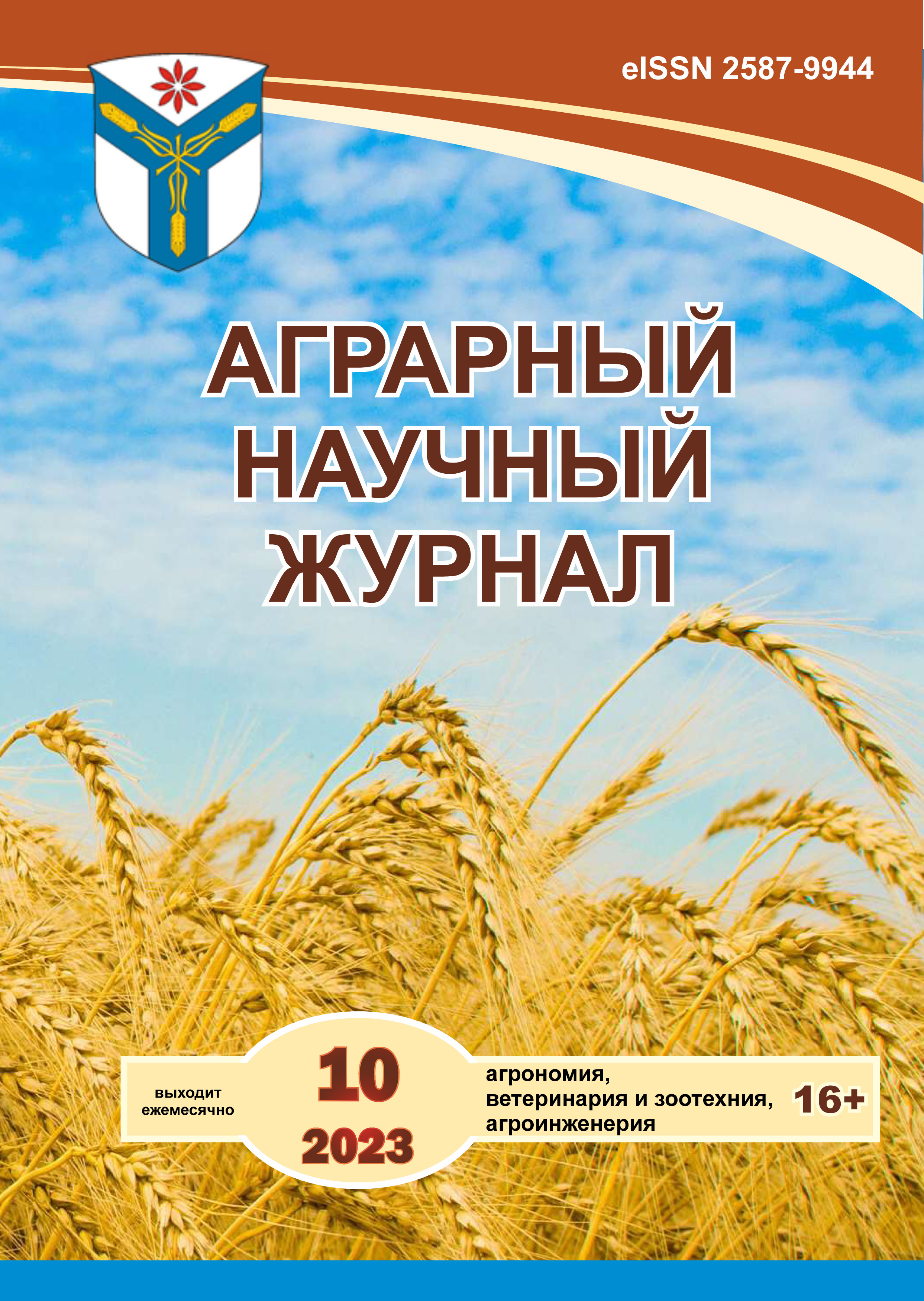The effect of the ethylene phytohormone on the growth, development and yield of potatoes
DOI:
https://doi.org/10.28983/asj.y2023i10pp14-20Keywords:
potato, variety, phytohormone, ethylene, biometric indicators, yieldAbstract
. In 2021–2022, experiment on growing potatoes with preliminary seed tubers storage in the environment of the ethylene phytohormone was conducted at the Russian Potato Research Centre. The aim of the research was to determine the influence of seed tubers treatment with phytohormone ethylene on growth, development and yield of potatoes, taking into account the preplant doses of mineral fertilizers and variety specificities. Ethylene appliance at a concentration of 15 ml/m3 was carried out in the potato storage from November till the end of April at a temperature 4 0C and a relative humidity 90-95%. As a result of research, it was found that the use of ethylene while seed potatoes storing of varieties Grand and Vympel provided the 2-3 days earlier emergence of seedlings; an increase in plant height by 1.5-12.4%; an increase in number of stems per plant by 11.4-26.3%; an increase in leaf surface area by 5.5-11.3%. The total potato yield due to ethylene appliance increased by 5.6-12.9% or 1.3-1.8 t/ha (Grand) and by 5.6-27.7% or 1.1-3.6 t/ha (Vympel). The most significant increase of yield was noted when growing potatoes with mineral fertilizers dose N30P30K45. Ethylene seed treatment did not have a significant effect on the percentage of commercial tubers. The Grand variety, compared with the Vympel, turned out to be more responsive to the use of high doses of mineral fertilizers. It was found that the most significant factor that provided an increase in total yield by 4.2-12.4 t/ha or by 25.3-93.9% (depending on the variety and ethylene treatment) was the dose of fertilizers.
Downloads
References
Доспехов Б. А. Методика полевого опыта (с основами статистической обработки результатов исследований). 5-е изд., перераб. и доп. М.: Агропромиздат, 1985. 351 с.
Мальцев С. В., Андрианов С. В., Митюшкин А. В. Эффективность применения ингибиторов прорастания при хранении сортов картофеля различного целевого использования // Картофель и овощи. 2021. № 3. С. 29–33.
Мальцев С. В. Об эффективности обработки семенных клубней картофеля этиленом // Сельскохозяйственная биология. 2021. Т. 56. № 1. С. 44–53. DOI: 10.15389/agrobiology.2021.1.44ru.
Методика исследований по культуре картофеля / Н. А. Андрюшина [и др]. М.: ВНИИКХ, 1967. 263 с.
Briddon A. Research Review: The use of ethylene for sprout control. British Potato Council. 2006. Ref: R279. 29 p.
Grierson D. 100 years of ethylene – a personal view. The Plant Hormone Ethylene // Annual Plant Reviews. Wiley Online Library. 2012. No. 44. P. 1–17. DOI: 10.1002/9781118223086.ch1.
Ju C., Chang C. Advances in ethylene signaling: protein complexes at the endoplasmatic reticulum membrane // AoB Plants. 2012. Pls. 031. DOI: 10.1093/aobpla/pls031.
Lacey R. F., Binder B. M. How plants sense ethylene gas – The ethylene receptors // J. Inorg. Biochem. 2014. No. 133. P. 58–62. DOI: 10.1016/j.jinorgbio.
Schaller G. Ethylene and the regulation of plant development // BMC Biol. 2012. No. 10(1). P. 9.
Vandenbusshe F., Vaseva I., Vissenberg K., Van Der Straeten. Ethylene in vegetative development: a tale with a riddle // New Phytol. 2012. No. 194(4). P. 898–909.
Downloads
Published
Issue
Section
License
Copyright (c) 2023 The Agrarian Scientific Journal

This work is licensed under a Creative Commons Attribution-NonCommercial-NoDerivatives 4.0 International License.








